Mid-Length Boards or Downwind Boards | Which Is Better for Wing Foiling?
MACkite's top wingnuts, Tucker, Ryan, and Jeff, are chatting about boards today. Downwind boards are gaining in popularity, but the really hot boards are hybrid, or mid-length boards. There seems to be a bit of misunderstanding about these two types of boards and their applications, especially with all the recent innovations, so the wing crew has gotten together to talk about their experiences on them and when they like to choose each one. If you're moving past the beginner phase of your wing journey and are ready to progress into the intermediate and advanced levels, you may be wondering if one of these options is right for you.
What Are They?
First, it's important to understand what these boards are. Downwind boards are longer, narrower boards that look like a race paddleboard. They're pointed and efficient in the water. They're made to build speed on the water with less drag, so they're great in lighter winds when used for winging. They usually measure at least 6'6", and can even be 8 feet long.

A traditional wingboard is relatively short and wide, a "chicken nugget". This makes them very nimble on foil, but they're somewhat draggy in the water and can be more difficult to get up on foil. The hybrid, or mid-length, board falls in between a chicken nugget and the downwind board and can be a nice compromise between the two. It's still got a little longer length and narrower waist for efficiency, but it doesn't have the full length of a downwind board.

As with any piece of gear, there are going to be pros and cons between the two, and there isn't going to be one "right" choice for everyone. It will depend on where you ride and the wind and wave conditions there, your skill, your weight, the rest of your gear, your budget and, of course, what your goals are in wing foiling.
Downwind Boards
Downwind boards are far and away the easiest board to get on plane and up on foil. They're extremely efficient through the water and need less wind than other boards to get going on. This makes them a great pick for inland lakes, reservoirs, and other areas where you might not get consistent wind.
If it's a bit of a drive to your riding spot and you don't want to worry about not finding enough wind when you arrive, the downwind board is a nice, safe pick. If conditions are rideable, the downwind board is going to get you up.
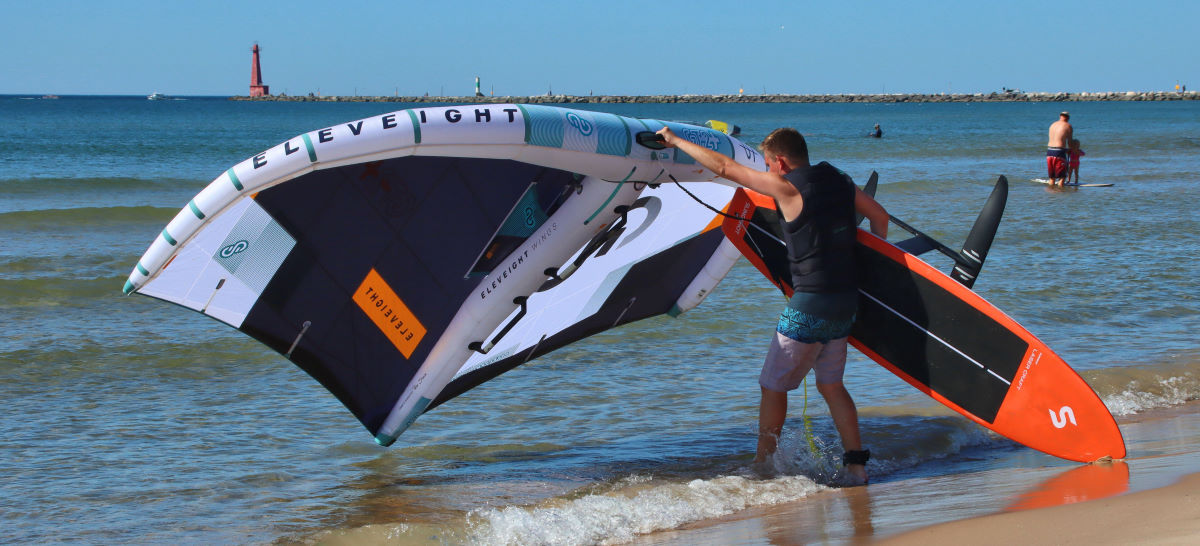
If your goal is just to get the most time on the water and you can only get one board, you may want to consider a downwind board. It'll give you the confidence to make the trip to the water when conditions are marginal. You'll be able to work on your turns and pumping without the stress of getting back up if you fall off foil.
When the wind does pick up, your downwind board will still handle that just fine. You'll have a blast doing hard turns, breaches, pumping, and riding swell. Downwind boards have an incredible wind range.
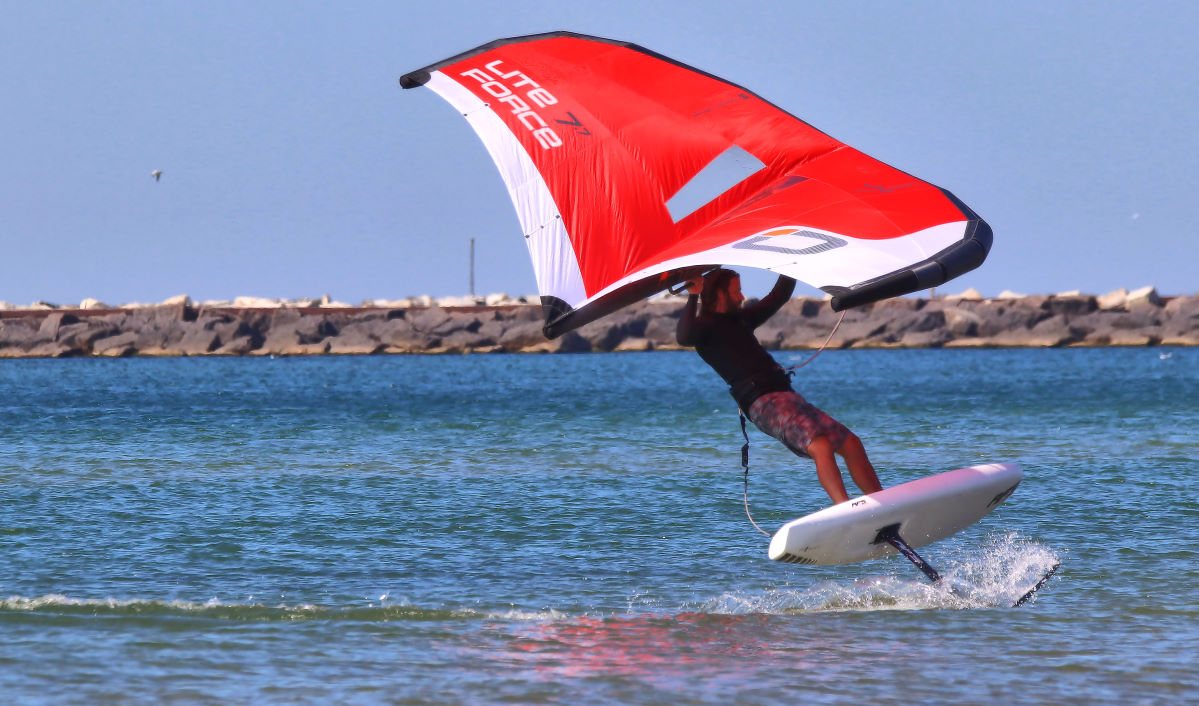
Downwind boards are phenomenal at getting upwind, so you won't need to worry about drifting too far downwind. You can taxi on these boards quite easily, even without lifting off.
Although they're narrow, the length does create stability from front to back, and once you find your foot position, you'll be able to adapt to the width. Don't let a 30% reduction in width scare you off, because that doesn't equate to a 30% increase in difficulty. The shape of the rails on a downwind board are designed to add stability while you're still on the water, and once you're flying, the foil creates your stability.
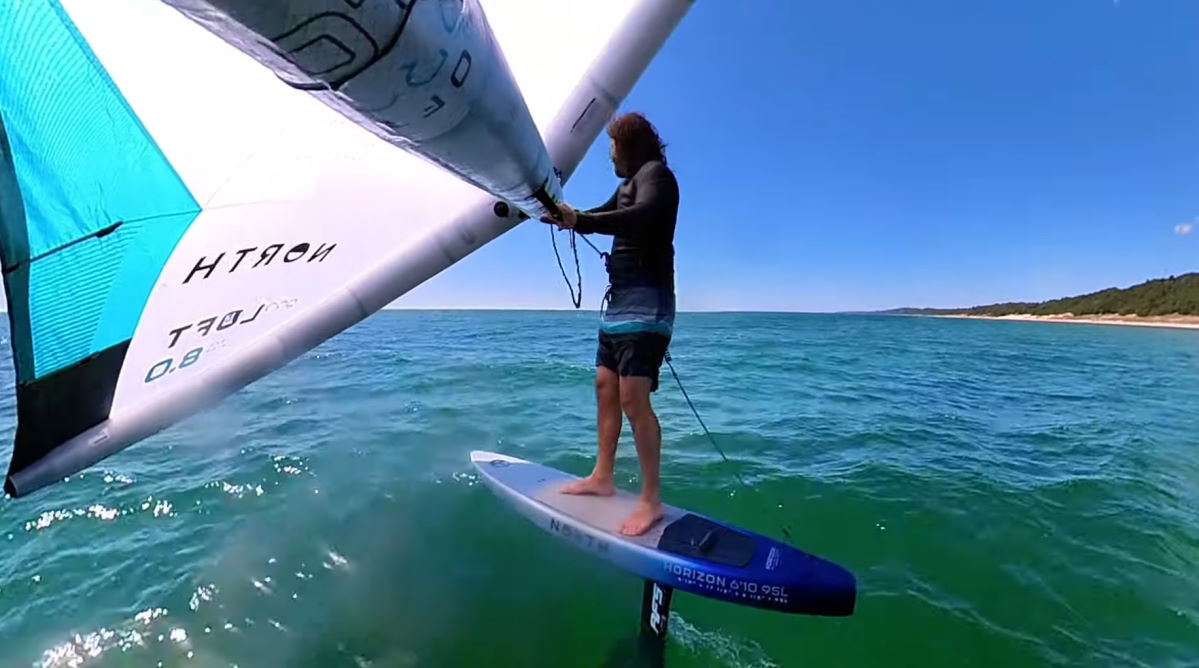
Another advantage of the downwind board is how you can maximize one foil setup. If you're around 175 lbs, you can ride a mid to high-aspect foil of around 1,000 cm2 in lighter wind because the board will give you the speed you need. Bigger foils add lift, but they also add drag with the extra surface area, so a smaller foil on a faster board can actually be better for light wind. Once you're up on that foil, you can really maximize your apparent wind speed, your upwind ability, and your glide. It's going to help you get through the lulls.
If you're still working on building your skills or ride in light wind most of the time, the long board is going to make up for that by helping you get up faster and more easily with the speed it can generate.
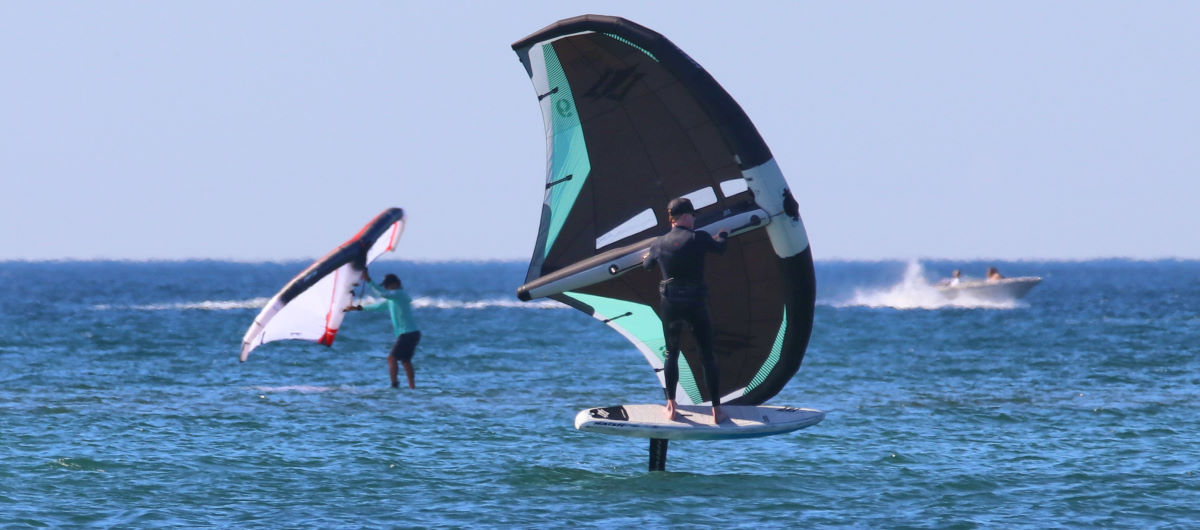
Why might you not want a downwind board? For some, that length isn't something they can store or transport. Others may not want that much board to swing around in turns. It is worth noting that developers place a priority on the weight of downwind boards to minimize the swing weight, and the mast is typically mounted much more toward the middle of the board, so that does a lot to balance the front and back of the board to make the swing weight much less noticeable.
Mid-Length/Hybrid Boards
Although downwind boards rule in light wind, it's amazing what you can get out in with the right setup. This makes mid-length boards a viable option for those who want or need a one-board quiver. If this is a goal, don't be afraid to size up just a bit. Adding a few extra liters isn't going to affect the board's performance noticeably, and it'll add light wind ability, which you'll appreciate on the days when the wind isn't terribly consistent.
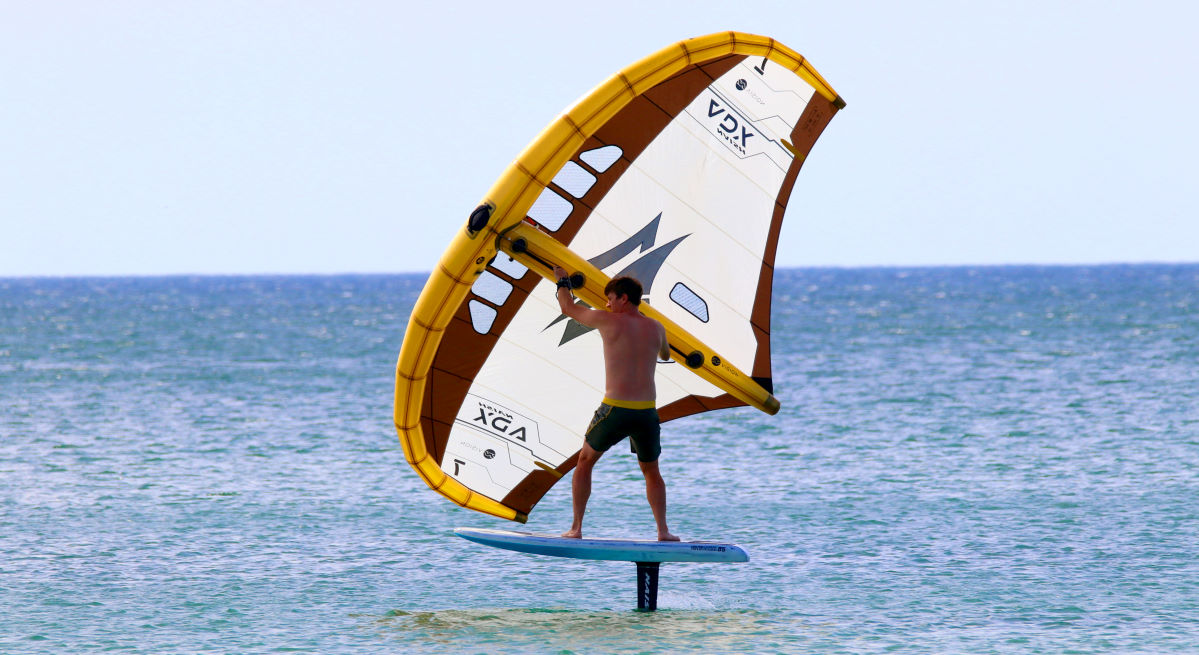
A good rule of thumb for board volume sizing is to get your weight in kilos at a minimum. In most cases, you will want a bit more than that. If you weigh 95 kilos, a good board might be a 120 L size. This will open other doors to you with that same board, such as downwind paddling or using a Foil Drive. It's always nice to have options for days without wind.
If you're the sort of person that doesn't like to go out unless you can jump and do freestyle tricks, then the mid-length board might be more your speed. You won't be riding in anything less than 10-15 knots, so you won't need the most efficient board to be able to get up on foil.
Mid-length boards also make a good one-board quiver if you ride both inland and in open water and on waves. You'll still have light wind ability, but you'll also have the performance you need for chest-high waves and basic jumps. This is a great choice for an upper intermediate rider who has the skillset to get a slightly smaller board going in a variety of wind conditions. Or if you ride a larger foil or wing, you might not need the efficiency of a downwind board.
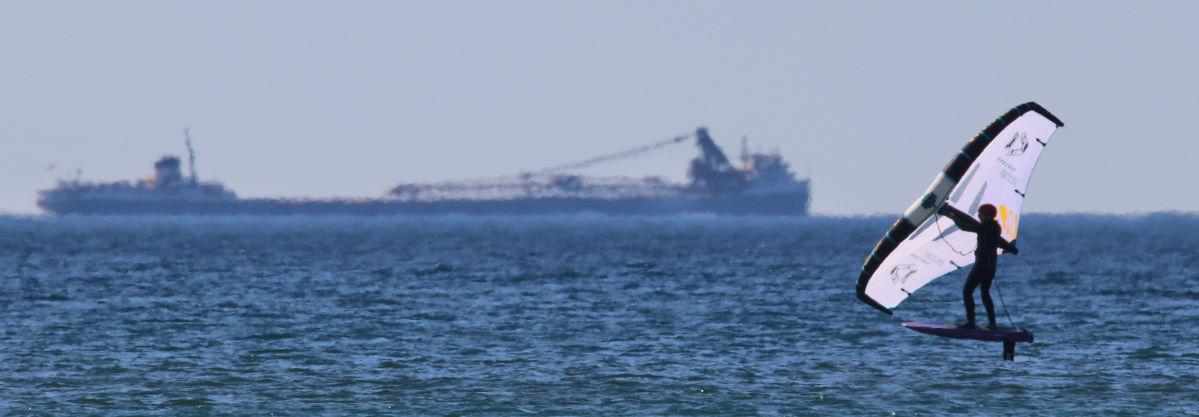
The ability to still get up in lighter winds gives the mid-length board a nice advantage over chicken nuggets. You'll be already up and riding when that gust comes, ready to take advantage of it and have fun with it, where on the smaller board, you'll need that gust just to get up. You'll also have more confidence to try new things since you know you won't be sitting in the water for several minutes, waiting for the next gust to get back up.
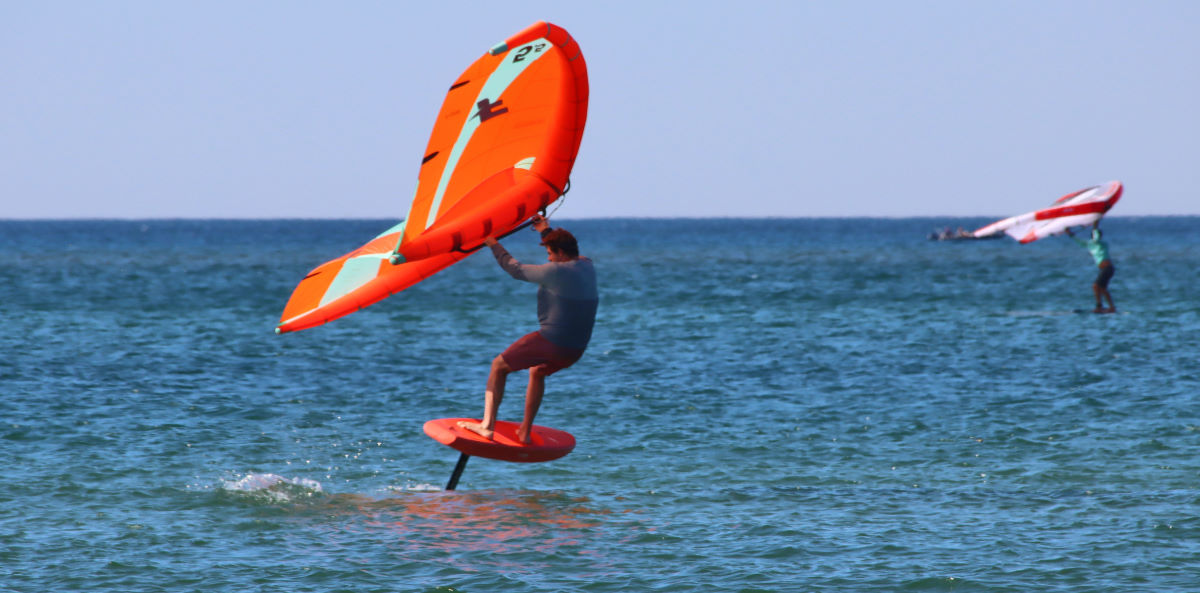
Summary
And, ultimately, that's what it's all about. If you're not riding, you're not progressing. If you can only choose one board, choose the one that's going to get you out on the water the most right now. If you choose the board you hope to grow into, you never will because you won't be getting up and riding, building that muscle memory, confidence, and the skills you need to advance. A good rider can keep getting more and more out of an easier board, but a less skilled rider isn't going to see any of the advantages of an advanced board. So get the board that will get you the most sessions and you will have more fun with the sport more often.
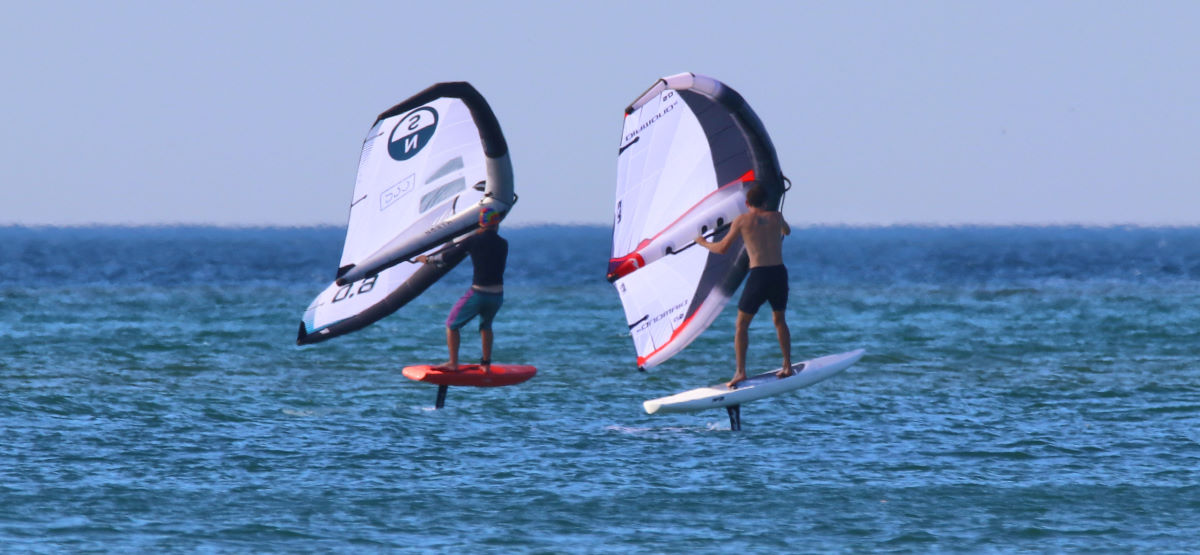
If you're not sure which is going to be the best board for you, the crew is always happy to listen and make suggestions. Shoot us an email, hop on chat, or give us a good, old-fashioned phone call. We want to share the stoke and see you out on the water!
MACkite Subscription Links:
YouTube | Instagram | Spotify Oddcasts
Contact MACkite Below:
800.622.4655 | Kiteboarder@MACkite.com | LIVE Chat Messenger



Recent Posts
-
Hot New Releases: MACkite Brand Parawing & Mystic Majestic Ex Custom Harness
MACwing v.5 Beta Single Skin Single Use Jake and Ryan from MACkiteboarding unveiled an excit …1st Apr 2025 -
Code Foils 1250R, with Josh Ku and James Casey | Training, Gliding, and Light Wind Downwinding
Introduction: The Rise of the 1250R The Code Foils 1250R is the latest and largest addition to Co …1st Apr 2025 -
2025 F-One Rocket Surf Prone, Rocket Wing Crossover, and Rocket Midlength Boards
Mid-length foilboards are rapidly growing in popularity and could soon dominate the market, especi …27th Mar 2025




